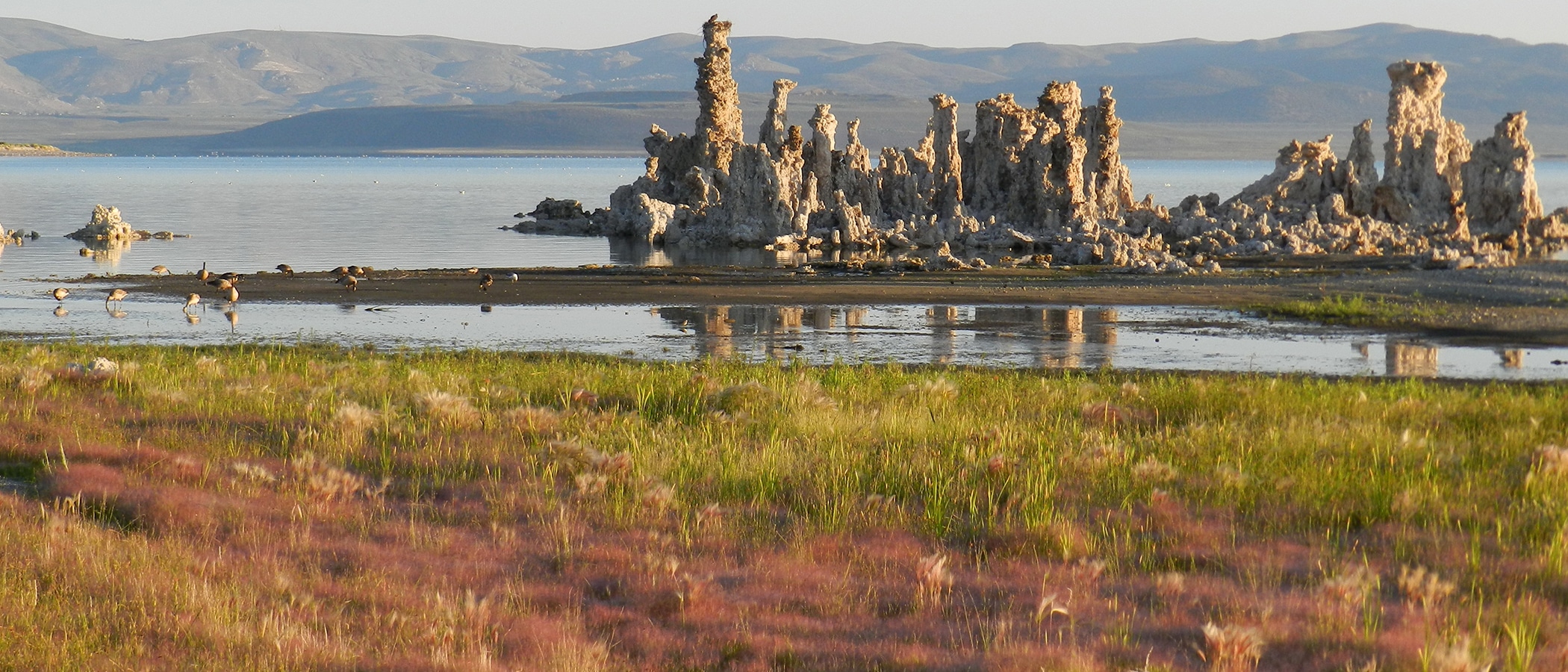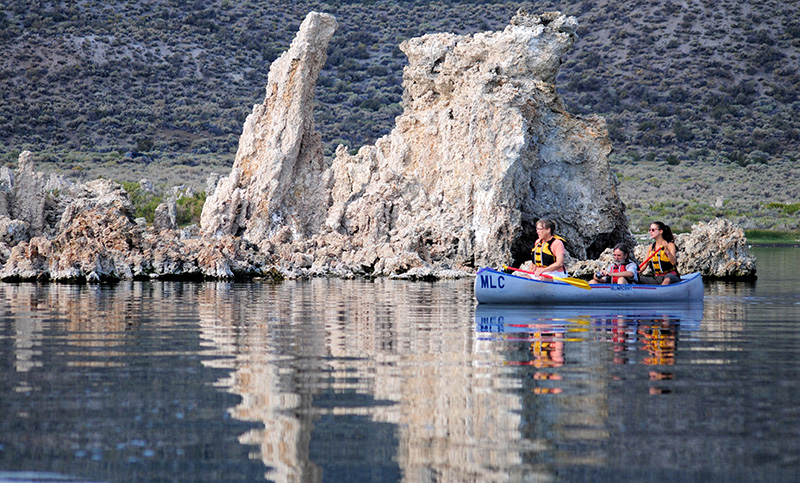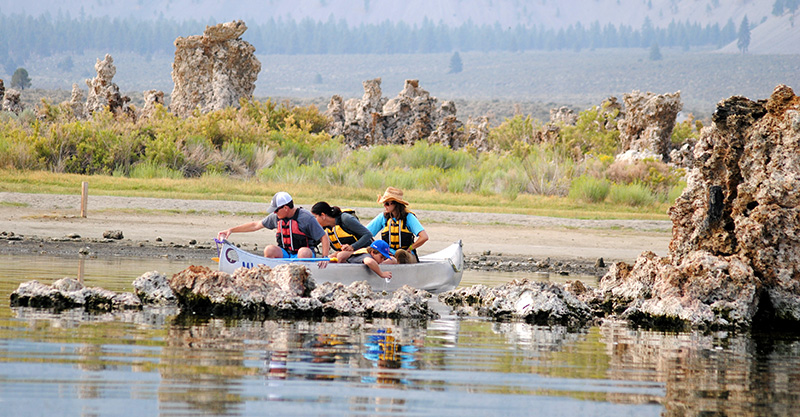
This post was written by Julia Frankenbach, 2013 Canoe Coordinator.
Now that we have hit late July in the Mono Basin, the Mono Lake Committee canoe program is in full swing! Each summer from mid-June to early September, we offer three guided canoe tours on Mono Lake each Saturday and Sunday morning. With the richness of the season—thick flocks of phalaropes, teeming alkali flies, and electric afternoon thunderstorms—and the vibrancy of this season’s canoe program, life as canoe coordinator is full to the brim.

A day in the canoe program begins early, at about 5:00am just as the sun is rising above the eastern Cowtrack Mountains. Last Sunday morning, the sun was bright red above the mountains as it shone through the smoke that blankets the Mono Basin from the nearby Aspen Fire. After checking the canoes, loading up life jackets, paddles, and flotation cushions into the Mono Lake Committee truck, I and three other interns embark on the 20-minute drive from Lee Vining to Navy Beach, a site at the southern shore of Mono Lake.
On the drive down to the lake, we talk little, yawn much, clutch coffee. But once at the shore of Navy Beach, the bright fresh beauty of a Mono morning brings us to life. The smell of brine and life and misty sunshine wipes out the need for coffee quickly, and we abandon our mugs to the task of carrying our six aluminum canoes down sandy slopes to the shoreline. As guests begin to arrive at the parking lot, I have the pleasure of greeting and meeting people from all over the country and from all corners of the globe. In the hustle and bustle of a busy canoe day, it can be easy to overlook the beauty of this. In this one humble gravel parking lot, in which our routine is so familiar, we receive hundreds of people for many of whom this place is completely new, exotic. I try to remember that we talk about phalarope and grebe migrations in the midst of quieter, individual human migrations … perhaps no less incredible.
After becoming acquainted with our often-international groups down at the shore, we have the challenging task of launching the canoes from a Navy Beach that hasn’t been this shallow in years. Because of low snowfall in the Sierra Nevada last winter, the lake level has been dropping this year, forming offshore tufa bars that render even our most stalwart of canoes useless even 20 feet out into the lake, teetering like beached whales on the submerged sand. But never fear—this is where the meat and might of the interns comes in. After some dragging and scraping and a few drenched interns later, we have successfully launched, and the magic of canoe tours begins!
We try our best to tailor each and every canoe tour to the specific group we have. The variety is incredible. Each person is here for their own reason, and each person finds different aspects of the canoe experience intriguing or meaningful. For example, on Sunday I spent ten minutes floating at South Tufa with a Danish family, using our “shrimp observation devices” (or plastic cups) to snatch up floating alkali fly pupae for the ravenous 15-year-old son who was quite keen on eating as many of the little brown cocoons as possible once I told him they were edible. On Saturday I discussed the water chemistry of Mono Lake with a biogeochemist from Boston and two soil scientists from France. On a different weekend, I floated the lake with an older couple from Los Angeles who had come north to find the source of their drinking water. Their favorite thing to do was simply to look around themselves and enjoy the lake’s glassy surface and crystal clear silence.

On each tour, I learn something new about the lake—the location of a newly-bubbling tufa tower, the exact reflectivity of indigo as a thundercloud approaches from the west. The sound of phalaropes flocking overhead at 8:30 in the morning. And on each tour, I learn something new about the myriad different ways this place can touch, astonish, intrigue, or inspire its many human visitors.
